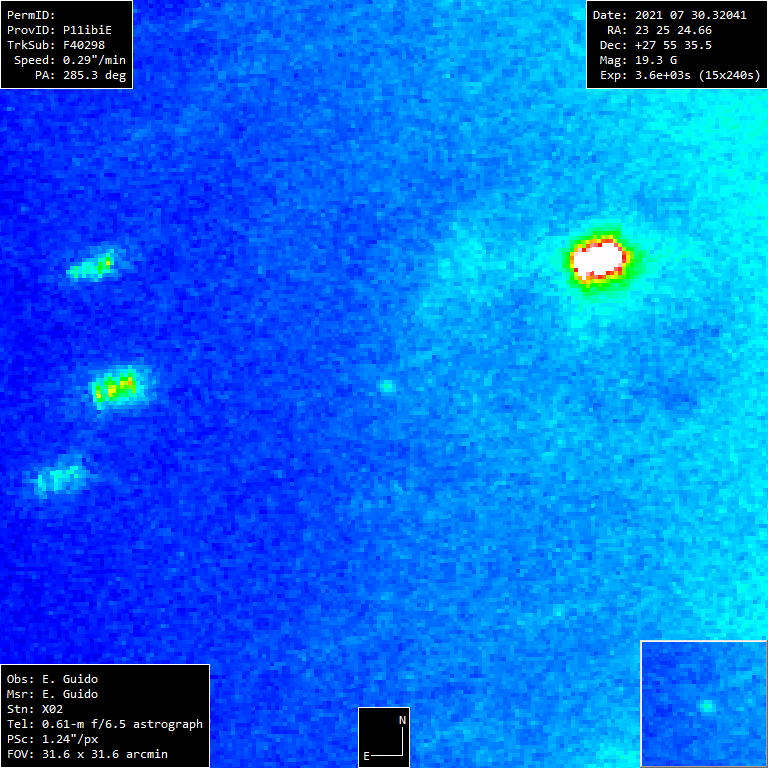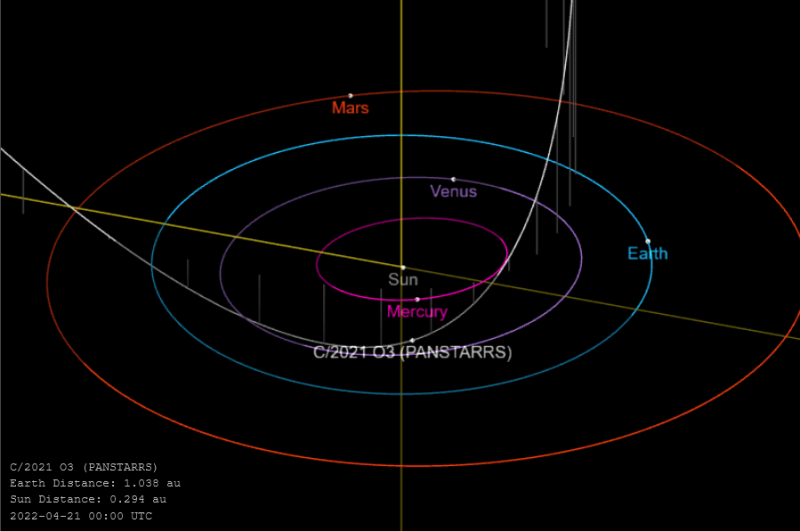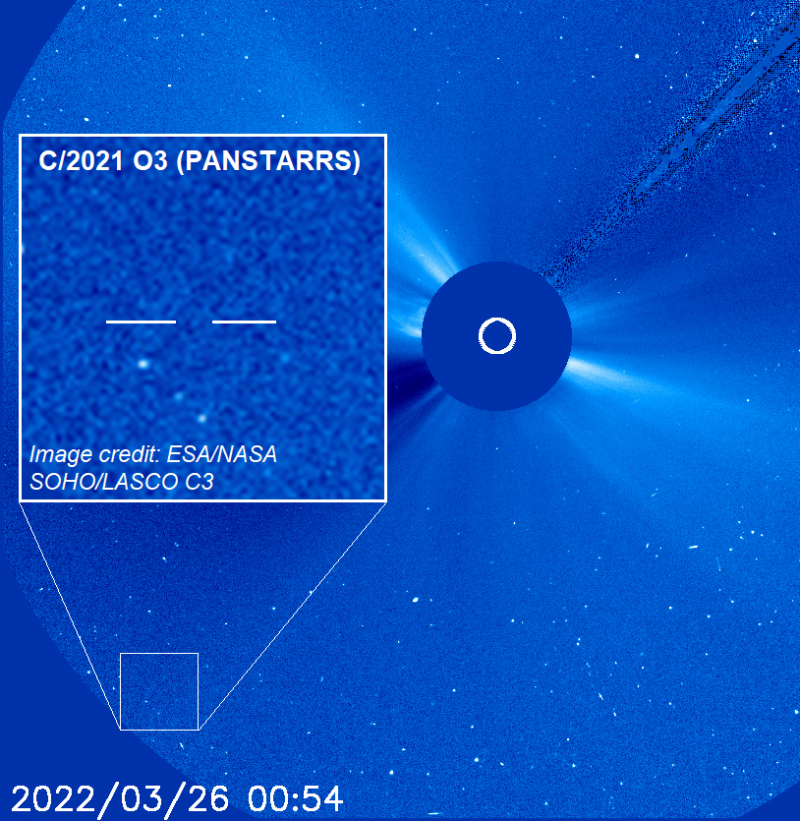
Update May 4: Comet C/2021 O3 has disintegrated
Comet C/2021 O3 (PanSTARRS) – which many hoped would appear bright in our sky around early May 2022 – did not survive its close pass by the sun (perihelion) in April. The Astronomer’s Telegram reported on May 2:
Twilight observations conducted with the Lowell Discovery Telescope on April 29, 2022, indicate that comet C/2021 O3 (PANSTARRS) has disintegrated … The comet would have been 0.38 AU from the sun, 0.70 au from Earth … during these observations.
Astronomers had been watching for the comet to re-emerge after its April 21 perihelion. What they did find was not a comet, but a diffuse glow, which they said was likely:
… a dust cloud or debris field persisting as a remnant from the disintegration of the nucleus, an event likely associated with the comet’s close perihelion passage on April 21 at 0.29 AU from the sun.
So, along with the comet, our hopes for a new binocular target this May have disintegrated.
Hot, hot, hot
Astronomers discovered this comet in July 2021, when it was still far from the sun.
Its closest point to the sun – on April 21, 2022 – brought it 0.29 astronomical units AU from our star, closer than the planet Mercury. So – given that Mercury’s sunny side reaches temperatures of around 750 to 800 degrees Fahrenheit (up to about 430 degrees Celsius) – you can see that Comet C/2021 O3 (PanSTARRS) really felt the sun’s heat.
Comets are icy bodies, and they are unpredictable. As it rounded the sun, the material in the comet’s nucleus, or core, likely simply boiled away.
That’s probably why Comet C/2021 O3 didn’t survive.
Darn! As a late American comet expert once said:
If you are going to bet, bet on a horse, not a comet.
Visitor from the Oort Cloud
Comet C/2021 O3 (PanSTARRS) appeared to have been “new” to the inner solar system, a first-time visitor. In fact, it took the comet perhaps millions of years to arrive here from the outer part of the Oort cloud.
If it had not disintegrated, the comet might have had just enough escape velocity, after it swept near our sun in April, to break the bonds of our sun’s gravity. If so, after it had swept past our sun, it might have veered into the wider space of our Milky Way galaxy … never to return.
But that didn’t happen. Instead … a long trip of millions of earthly years, a close sweep near our sun and … poof! No more comet.

A brief history of Comet C/2021 O3
Scientists first observed C/2021 O3 (PanSTARRS) on July 26, 2021. They were using the 71-inch (1.8-meter) Pan-STARRS 1 telescope located on the island of Maui in Hawaii. This telescope uses a 1.4 gigapixel camera to image the sky in search of asteroids and comets. It has found more than 250 comets since 2010. The Central Bureau for Astronomical Telegrams announced the new comet via Electronic Telegram No. 5009.
Why did astronomers get excited about this comet? They found Comet C/2021 O3 (PanSTARRS) when it was still 4.3 astronomical units AU from the sun. So it was more than four times Earth’s distance from the sun, but closer to the sun than planet Jupiter. The comet appeared as a marginally fuzzy starlike object. It was placed on the Possible Comet Confirmation Page, which prompted several teams of astronomers to examine it more closely under high magnification.
Then Ernest Guido of Italy imaged the comet and found it had a small coma (atmosphere). The image at the top of this page is his image; you’ll also find it here. Usually, a comet’s coma doesn’t appear until a comet sweeps closer to the sun.
In this case, the presence of a coma for a faraway object suggested to astronomers a comet that’s big and might become bright.
On August 2, 2021, the IAU Minor Planet Center in Cambridge, Massachusetts designated the object as Comet C/2021 O3 (PanSTARRS).

There’s always another comet
By the way, there’s another comet discovered by the same observatory in Hawaii that might provide nice views for observers using small backyard telescopes during this upcoming northern summer. That other comet is called C/2017 K2 (PanSTARRS).
Keep watching the sky!
Bottom line: Comet C/2021 O3 (PanSTARRS) reached perihelion – its closest point to the sun – in April 2022. Many hoped it would be bright when it reentered our evening sky by early May. Instead, it disintegrated.
Read: Large comet C/2017 K2 to pass Earth safely in July 2022
The post Darn! Comet C/2021 O3 PanSTARRS has disintegrated first appeared on EarthSky.
0 Commentaires